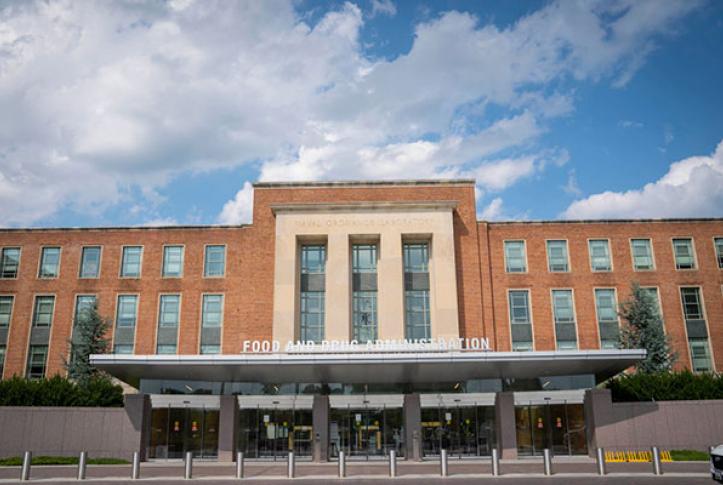The U.S. Food and Drug Administration (FDA) safeguards public health by rigorously evaluating drugs, medical devices, and diagnostic tools through a scientific review process, balancing risks to patients with expedient access to needed innovative medical products. During the COVID-19 pandemic, the agency has relaxed regulations to address interruptions in the supply of drugs and medical equipment, facilitate clinical trials and product reviews, and enable access to diagnostic tests and treatments for COVID-19. While these changes may have resulted in a nimbler pandemic response, there are trade-offs with respect to risk and safety. In this post, we examine whether the FDA’s regulatory accommodations to the public health emergency are appropriate in a postpandemic world.
Potential Benefits of Regulatory Flexibility
Many regulatory changes were instated to facilitate continuity of several general functions of the FDA that would otherwise be disrupted or unsafe to continue because of the pandemic. These actions include:
- suspending routine on-site inspections of domestic and overseas manufacturing facilities and relying solely on reviewing company documents, processes, and past inspection records to ensure safety
- reducing data requirements for clinical trials and issuing guidelines for safely conducting such trials while complying with social distancing
- relaxing in-person safety protocols that are typically required before providers can administer certain drugs
- facilitating importation of personal protective equipment and medical devices, and
- loosening regulatory restrictions for companies that change suppliers or switch medical device components because of manufacturing delays or supply shortages.
To varying degrees, each of these changes may be shown to hasten access to medical products or cut costs for manufacturers and the agency. But the FDA should carefully review safety performance under these policies before continuing them after the pandemic is over. Rigorous postmarket surveillance of modified medical devices, drugs and devices manufactured abroad, and drugs that are approved or distributed based on these reduced requirements would help reveal the safety impact of these regulatory shortcuts. If the agency determines there was no increase in risk to patients, it may have ground for keeping some or all in place after the public health emergency ends.
Other flexibilities are specifically designed to facilitate the development and review of products intended for pandemic response. For example, the FDA issued guidance which made it easier for the industry to set up meetings with the agency during the development process for pandemic-related products. The agency also established the Coronavirus Treatment Acceleration Program, “a public–private approach to bring coronavirus treatments to market as fast as possible,” and issued guidance explaining the FDA’s priorities and recommendations for clinical trials of investigational COVID-19 treatments. Unlike the regulatory changes described above, which introduce potential safety risks by forgoing standard procedures, these changes instead increase the time and resources invested by the FDA to speed the development process. These policies may be better candidates to consider for permanent implementation. It would, however, be too resource-intensive to make them a part of the FDA’s standard process without substantial new funding. In the absence of new resources, these modifications may be useful tools to implement on a limited basis (e.g., the development of nonopioid pain management or treatments for ultrarare diseases).
Where Haste Made Risk
Two recent examples illustrate the risks that deregulation can introduce:
- On March 11, in the face of inadequate COVID-19 tests, the FDA allowed states to independently authorize laboratory-developed tests within their borders and gave manufacturers a green light to distribute newly developed diagnostic and antibody tests prior to receiving a formal emergency use authorization (EUA). However, within weeks, the FDA began to issue warnings about fraudulent diagnostic tests entering the market and, on April 24, the agency announced that many antibody tests were producing false positive results. These failings undermined confidence in the country’s testing capacity and may have slowed appropriate pandemic-control efforts. In response to the scrutiny, the FDA enacted stricter rules for antibody tests, resulting in the removal of 27 tests from the market in late May and the FDA’s revocation of an EUA for an antibody test by Chembio Diagnostics. Now, the FDA has returned to using its standard protocol for emergency authorizations and has issued EUAs for 212 diagnostic and antibody tests, as of mid-August.
- Under intense public pressure, the FDA issued an EUA on March 28 for the use of antimalarial drugs hydroxychloroquine and chloroquine phosphate in hospitalized COVID-19 patients. But in April, the FDA issued a warning statement stressing the need for close patient supervision. Ultimately, on June 15, the FDA revoked the EUA for the unapproved uses of these products, as new studies showed greater risk and less benefit to COVID-19 patients. This particular episode has contributed to a prevailing sense of public confusion on whether these medications are legitimate treatments for COVID-19.
Striking the Balance
When the pandemic is over, policymakers will have to decide whether to retain these changes wholesale, return to previous operations, or cherry-pick changes worth continuing. Expediting access to medical products could result in greater efficiency, less expensive products, improved health outcomes, and decreased costs to the health care system overall. But relaxed data requirements, fewer routine physical inspections, remote clinical trials, and the suspension of in-person safety protocols may undermine the agency’s ability to assess the risks of patient safety. The FDA, with oversight from Congress, will need to review the impact of these changes to decide the best way forward.





